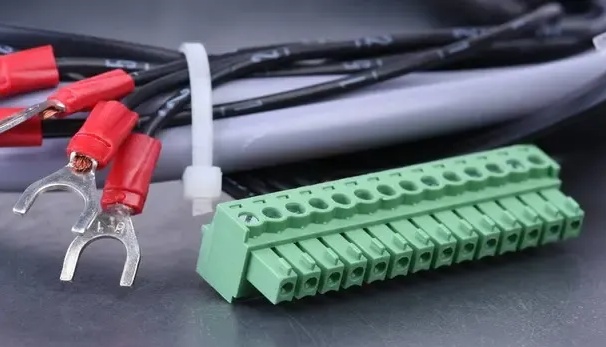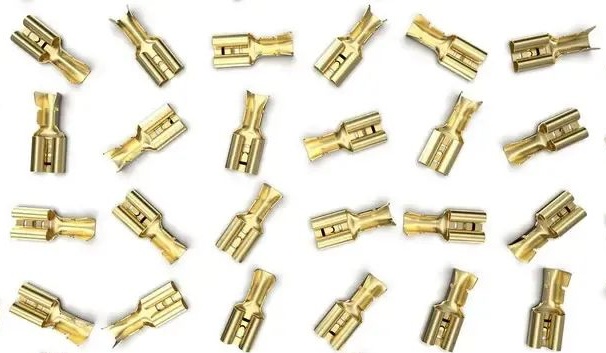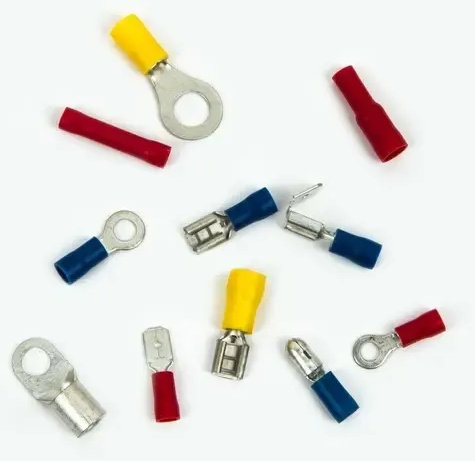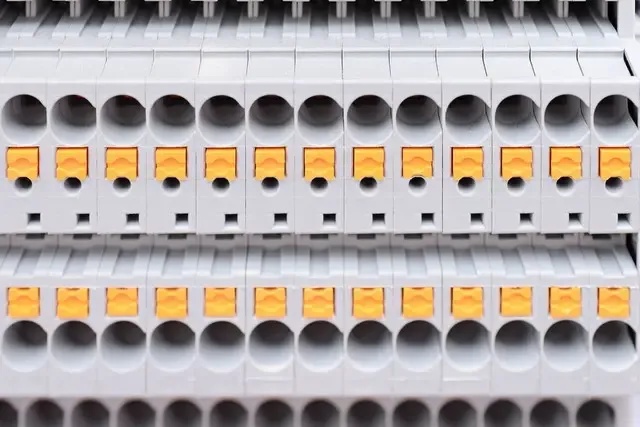New Energy Vehicle (NEV) is the representative of future transportation, connector terminal is an often overlooked but vital part, usually neglected. Why should we choose the materials for new energy vehicle connector terminals? These terminals require stable contact resistance, good mechanical strength and durability, lightweight, easy processing into smaller sizes, and a certain degree of elasticity.
Let’s learn more about the importance and differences in selecting these materials.
The role of connector terminals in new energy vehicles
In the world of new energy vehicles (NEVs), each component plays a key role in achieving optimal performance, safety, and efficiency. Among these components, connector terminals are the silent “workhorses” that facilitate seamless energy transfer and communication within the vehicle. Let’s take a closer look at their importance.
Basics of Connector Terminals
Connector terminals are specialized connectors that ensure a stable and efficient connection between different parts of the electrical system. In electric vehicles (EVs), these terminals are an important part of power transmission from the battery to the motor and other vital systems. Since their reliability directly affects the performance of the vehicle, the choice of terminal shape and material is critical.
Development of terminals for new energy vehicles
With the development of new energy vehicles, connector terminals must adapt to these changing needs. From the initial basic connectors to today’s advanced connectors capable of handling high currents and high-speed data transmission, the development of connector terminals reflects the rapid development of new energy vehicle technology.
Structure and function of terminals
The main design objective of connector terminals is to ensure a stable electrical connection. They consist of a metal contact, an insulator, and a locking device and are used primarily to ensure efficient energy transfer, but also for data transmission, grounding, and shielding against electromagnetic interference. They are particularly important in new energy vehicles because of the high currents and fast data communication required between the various vehicle systems.
Types of crimp terminals
Crimp terminals are an integral part of connector terminals and are designed to make a secure connection by crimping or compressing the terminal onto a wire. There are different types of crimp terminals used in new energy vehicles, each designed for a specific application.
For example, ring terminals are used for screw or stud connections.
Spade terminals are used for quick disconnects;
Bullet terminals are used for quick connection and disconnection.
Butt terminals are used to connect two wires.
Each of these types of crimp terminals offers unique advantages, and their selection depends on the needs of the vehicle system in which they are integrated.
Material Selection Criteria
Choosing the materials used for New Energy Vehicle (NEV) connector terminals is not arbitrary. It’s a decision influenced by several factors, each of which plays a vital role in ensuring optimal vehicle performance. Let’s take a closer look at these criteria.
Stable contact resistance
The interfacial resistance between two conductive materials is known as contact resistance. For new electric vehicles (NVs), it is critical to maintain a consistently low contact resistance. Excessive or unstable contact resistance can lead to energy loss, overheating, and even system failure. To ensure efficient energy transfer and overall vehicle performance, the materials selected must minimize resistance.
Mechanical strength and durability
Because NEVs operate in dynamic environments, connector terminals must be mechanically strong. They should be able to withstand vibration, temperature changes, and other stresses without damage. In addition, durability is critical. Materials must be resistant to abrasion and tearing to ensure that the terminals continue to function properly for the life of the vehicle.
Lightweight and size considerations
As new energy vehicles become more flexible and efficient, every gram counts. The materials used for connector terminals should be lightweight without compromising their functional characteristics. Miniaturization is also becoming increasingly important as NEVs evolve. The materials chosen should be easy to process into smaller, compact designs without losing their essential properties.
Flexibility
While stiffness is critical to stabilizing the connection, a degree of flexibility is also essential. Resilience facilitates the installation and removal of connectors, ensuring that they snap firmly into place and can be removed without excessive force.
Coating of Common Connector Terminals
Coatings perform two functions in connector terminals. First, they protect the terminals from environmental factors such as moisture. Secondly, coatings improve the conductivity of the terminals and reduce contact resistance. Gold, silver, and tin are common coatings, each with unique benefits. The choice of coating can greatly affect the performance of the NEV’s terminals.
The Importance of Material Selection
Let’s take a closer look at the importance of choosing materials for new energy vehicle (NEV) connector terminals. The selection of these materials can have a significant impact on vehicle efficiency, safety, and long-term operating costs.
Improving Vehicle Efficiency
The materials used for connector terminals are critical to the overall efficiency of a new energy vehicle, as they ensure stable contact resistance for optimal energy transfer and reduced losses, which improves vehicle performance and energy efficiency, thereby extending battery life and range. As a result, choosing the right materials can provide a better driving experience.
Safety Considerations
The materials used for connector terminals have a direct impact on the safety of the vehicle and its occupants, and new energy vehicles are no exception. Corrosion-resistant materials ensure stable performance and reduce the risk of electrical failures that could jeopardize safety systems. Choosing the right material is therefore a guarantee that the vehicle will operate safely in all environments.
Longevity and maintenance
Every car owner wants their vehicle components to last and require little maintenance. Therefore, choosing materials that are resistant to abrasion, corrosion and other forms of degradation will ensure that connector terminals remain functional for a long period, which not only reduces the frequency of replacement but also reduces maintenance costs. In short, choosing the right material can save time and money.
Conclusion
In the complex environment of new energy vehicles (NEVs), connector terminals seem to be just a small cog in a huge machine. Nevertheless, as we have discussed, their role is undoubtedly huge. Choosing materials for these terminals is not just a technical decision; it also affects the efficiency, safety, and long-term operability of the vehicle.
The material used for connector terminals is critical, from ensuring optimal energy transfer to protecting the safety of the vehicle and its passengers. In addition, it determines the service life of these components, which in turn affects maintenance schedules and costs. As NEVs continue to grow in the global transportation sector, the choice of materials for connector terminals will become increasingly important.
Fundamentally, choosing environmentally friendly and sustainable materials for connector terminals is becoming critical, as the delicate balance between engineering, safety, and sustainability will determine the future of transportation.
Post time: Jun-12-2024



